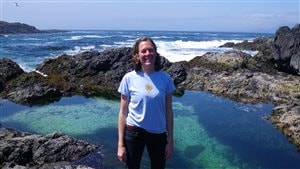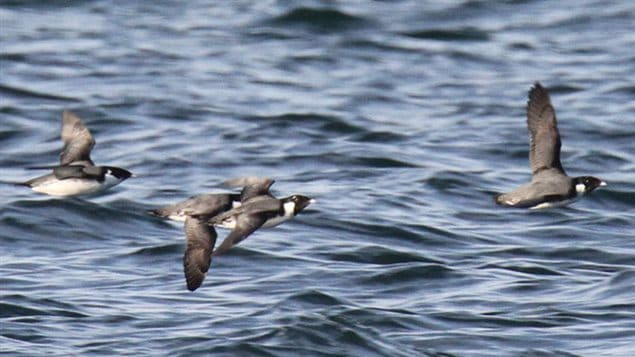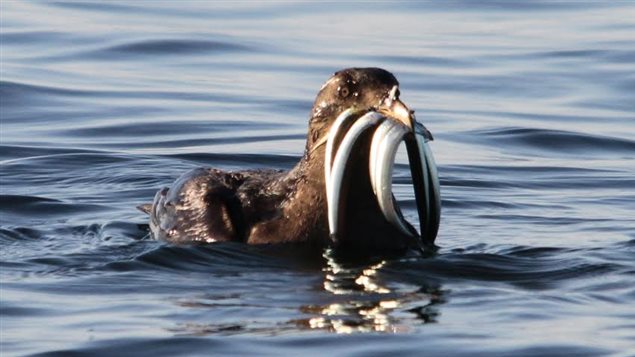It seems shocking, but a study of seabird populations shows that since the 1950’s there has been a 70 percent decline in seabird populations.
Michelle Paleczny is currently a biologist working with Parks Canada, but researched the decline in seabirds as part of her Masters degree at the University of British Columbia working with the Sea Around Us project at UBC.
Listen

The research was published in the science journal PLOS One
The study was a collaboration between lead author Michelle Paleczny and other UBC researchers, Vasiliki Karpouzi and Daniel Pauly and Edd Hammill, a lecturer at the University of Technology, Sydney in Australia.
The team studied hundreds of research papers dealing and studies on seabird populations. The most comprehensive data concerned 19 seabird species.The most comprehensive ones begin around 1950, and after analysis they determined the approximate 70 percent decline.
Paleczny says, that although additional data is not available for other areas and species, from their analysis, it is reasonable to presume that the same dramatic decline exists in other populations around the world
There are several factors for this decline, many caused by human activity. This includes overfishing of seabird prey fish, death from entanglement in nets or long line fishing hooks, ingestion of plastic garbage, oil pollution, and climate change. Global warming/climate change can itself have a variety of effects from moving prey fish to entirely new locations far from traditional colony sites, to nest destruction by weather anomalies, to causing other predators to change their feeding habits, such as polar bears invading eider duck colonies.

Paleczny notes that seabirds play an important role in marine and near-shore ecosystems. They eat and are eaten by a variety of other marine species. They also transport nutrients from the ocean back to the coastal ecosystems in which they breed, their guano (poop) helping to fertilize entire food webs.
She also says that the decline is a strong signal that the marine ecosystem is in trouble.
“Seabirds are particularly good indicators of the health of marine ecosystems,” said Paleczny. ”When we see this magnitude of seabird decline, we can see there is something wrong with marine ecosystems. It gives us an idea of the overall impact we’re having.”







For reasons beyond our control, and for an undetermined period of time, our comment section is now closed. However, our social networks remain open to your contributions.